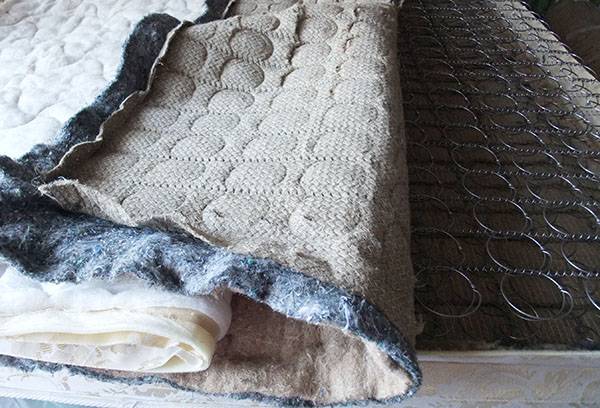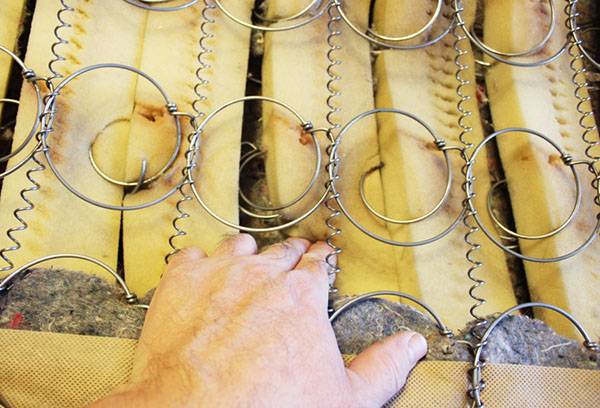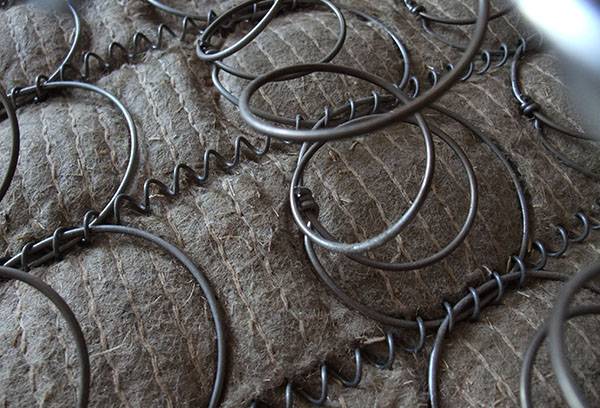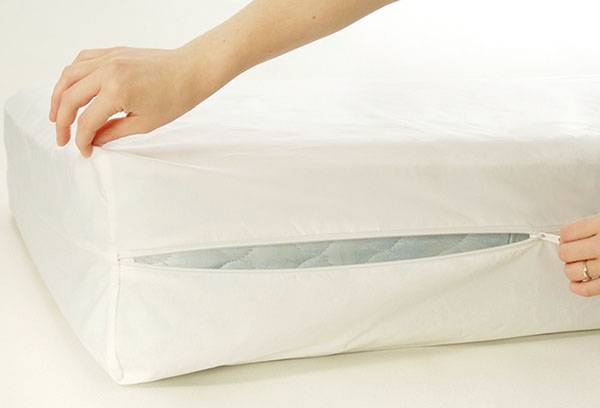Is it possible to repair a spring mattress at home?
Despite certain difficulties, you can repair spring mattresses yourself. The volume and time of work depend on the type of malfunction, the type of mattress itself, as well as the user’s skill. The resource purity-en.htgetrid.com has collected useful and relevant information on how to properly carry out repair work and achieve a high-quality result.
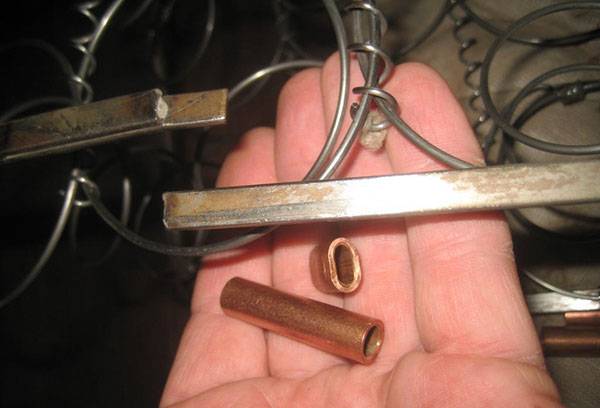
Types of faults
There are two types of spring mattresses: with an independent spring block and with a continuous weave of springs. Modern orthopedic mattresses in most cases are equipped with separate blocks of springs; continuous weaving is found in old-style mattresses.
During repairs, the user may encounter various breakdowns:
- the need to replace external upholstery or sealing material;
- disconnecting the spring from the base;
- deformation of the spring block;
- cracks in the mattress frame.
A number of tools are required to carry out the work:
- hammer and pliers;
- nails (regular 50-60 mm and furniture);
- clamps;
- stationery knife or scissors;
- needle and strong thread (preferably regular thick or silk);
- sealing material – synthetic winterizer or foam rubber;
- durable cord (recommended thickness 5 mm);
- manual or electric stapler, staples;
- spare springs.
Stage 1: Removing the upholstery and cleaning
Experts recommend repairing a mattress outside or in a garage, but if this is not possible, it is permissible to do it at home.The entire structure should be placed on a flat horizontal surface or several stools so that the structure can be approached from any side.
In most cases, the top decorative cover is closed with a zipper along the entire perimeter; it is easy to remove and remove the structure itself. If the outer material is stitched, it should be ripped apart; it is not necessary to cut all the seams; it is enough to separate the parts of the cover on one side. Then carefully remove the sealing and cushioning fabric that covers the springs.
Important!
In modern mattresses, the lining fabric is glued with strong glue. To remove it, carefully cut the glued seams with a sharp knife.
If the mattress has been in use for a long time, a large accumulation of dust may form in it, which should be removed with a household or car vacuum cleaner. At this stage, you should thoroughly clean all parts of the mattress. If the sealing and lining material has become unusable, it is recommended to replace it with a new one or wash it.
Stage 2. Inspection and repair of spring blocks
Springs are located under the lining fabric, sometimes they are wrapped in individual covers. The entire spring harness is secured to nails nailed to the frame - they should be bent or removed. At this stage, you need to inspect all the blocks; each spring must be securely attached to the base. If any elements move freely or the fastenings are worn out, they should be replaced and the parts should be secured with clamps or nailed with slats.
There are several methods for attaching spring blocks: on slats, on clamps, on straps. It is enough to examine how the others are recorded.
Important!
The most important thing is that the spring is securely attached to the base.If you don’t have the necessary materials at hand, you can make do with improvised means - thick nylon clamps, pieces of leather belt, metal staples for self-tapping screws.
In some mattresses, the springs are tied together with wire - there is no need to remove all of it, it is enough to bend it only in those places where the blocks have sagged. After replacing the springs, the wire is bent to its previous position.
If wooden slats have become unusable, you can also replace them yourself. Before removing the old ones, you should mark on the frame where the fixing straps are attached. After this, you can remove the nails and fastening tape. On new slats you need to cut out holes (grooves) and attach them to nails on both sides.
Stage 3. Tying spring blocks
When all the springs are securely fixed to the frame, they need to be tied. It's very easy to do.
- You need to drive a nail opposite each row of springs at the level of the frame (you can see how the springs were initially fixed).
- All nails are bent with hooks.
- First of all, fix the two outer springs of the horizontal row.
- Next, fix the springs vertically.
- When all the longitudinal rows are tied, they finish tying the transverse ones, and both the springs themselves and the longitudinal cord are tied with a cord - this will ensure reliable fixation of the entire structure.
- Upon completion of the tying, all nails are deepened into the frame to the base so that the cord does not fall off.
Stage 4. Replacing the casing
The material that covers all the springs is removed and a new one is installed. The edges of the sheathing are folded into a gusset and secured to the frame using a hand stapler or small furniture nails.
Experts recommend replacing the spring casing, even if its external condition is satisfactory.If the repair is carried out efficiently, you won’t have to return to replacing springs for another 5–10 years, and it’s unlikely that the factory casing will “live” for a second period. This procedure is also carried out for hygienic purposes, because the fabric absorbs all odors and may contain dust and dust mites. If replacement is not possible, the material is washed and patches are applied if necessary.
Foam rubber or padding polyester is placed on top and secured to staples using a stapler. At the end, the external decorative material is stretched and attached around the perimeter. When laying each layer, stretch the fabric evenly to avoid wrinkles and sagging areas.
This completes the repair of the spring mattress. In cases where the frame itself is deformed, the user needs to replace its parts. To do this, the entire structure is disassembled, all fasteners and springs are disconnected. New frame elements should be selected in accordance with the characteristics of a particular model; in most cases, you can get by with a wooden block. This is a simple, but rather labor-intensive job that is best left to a specialized workshop.
